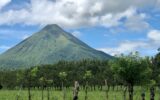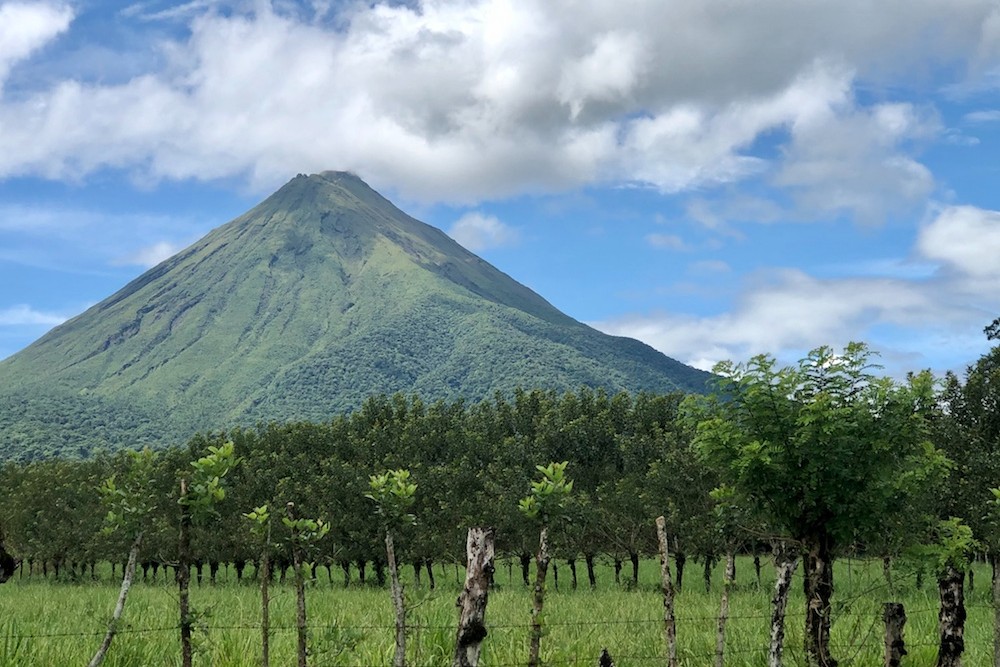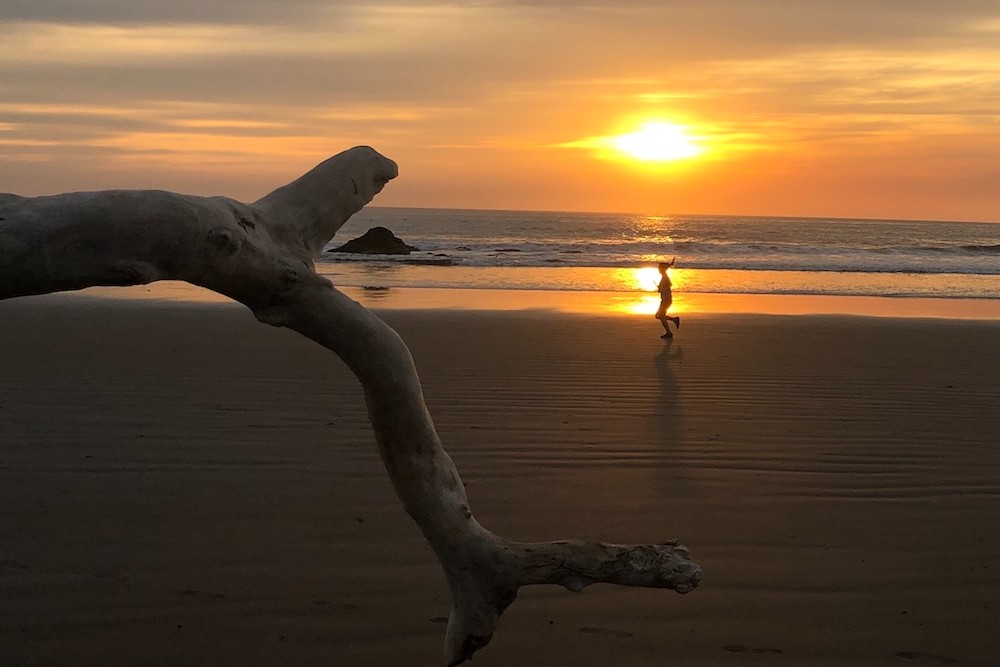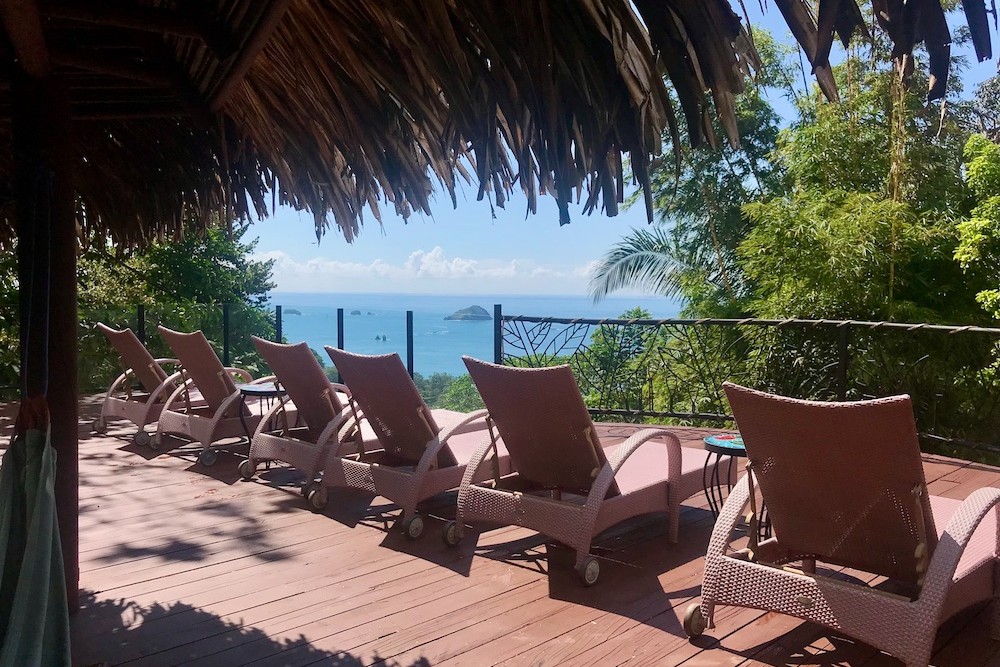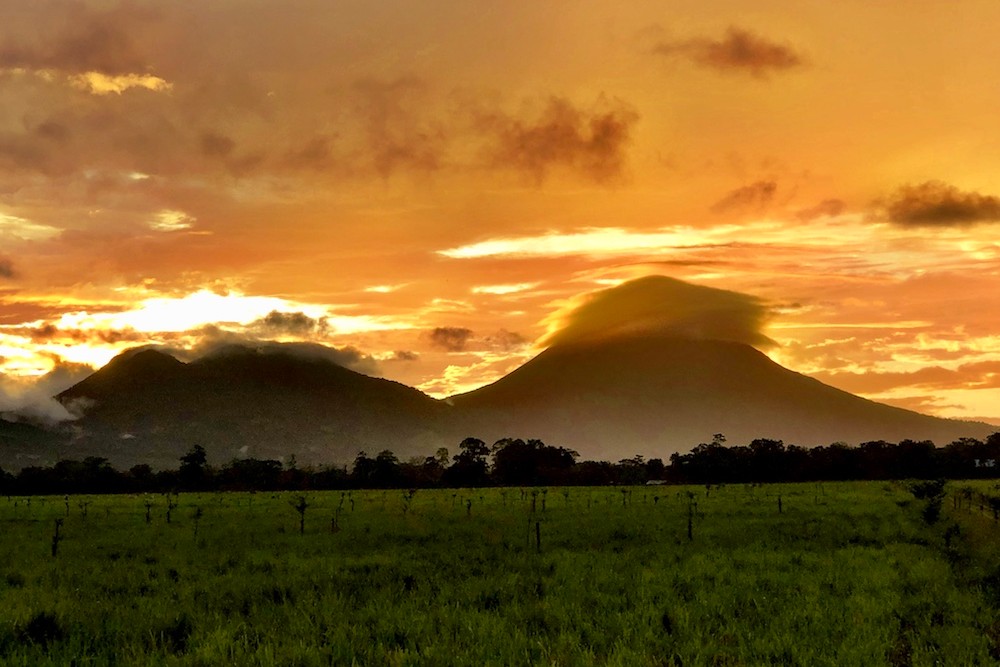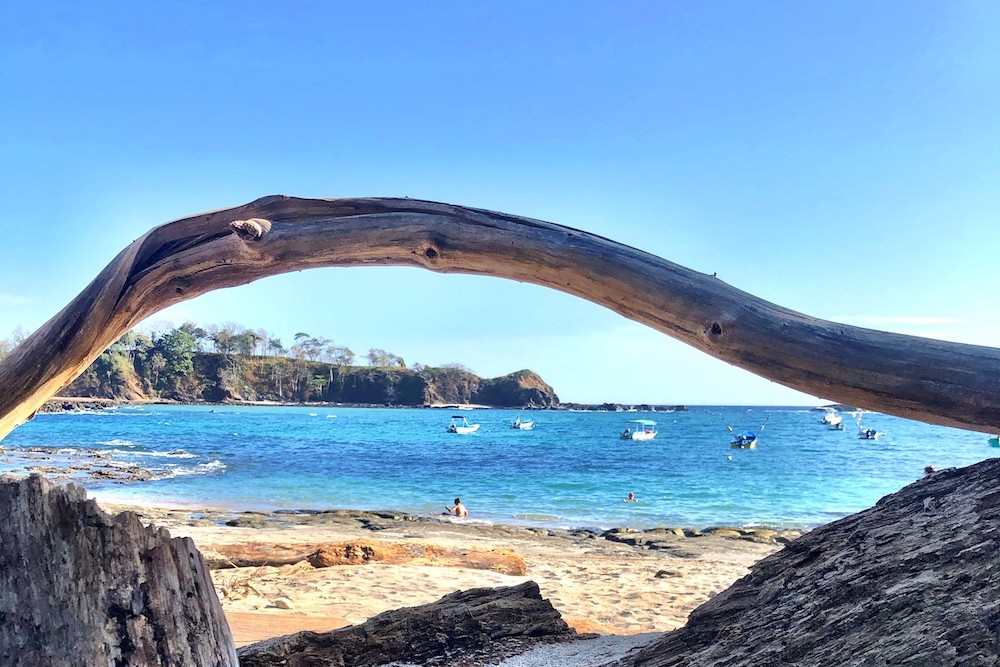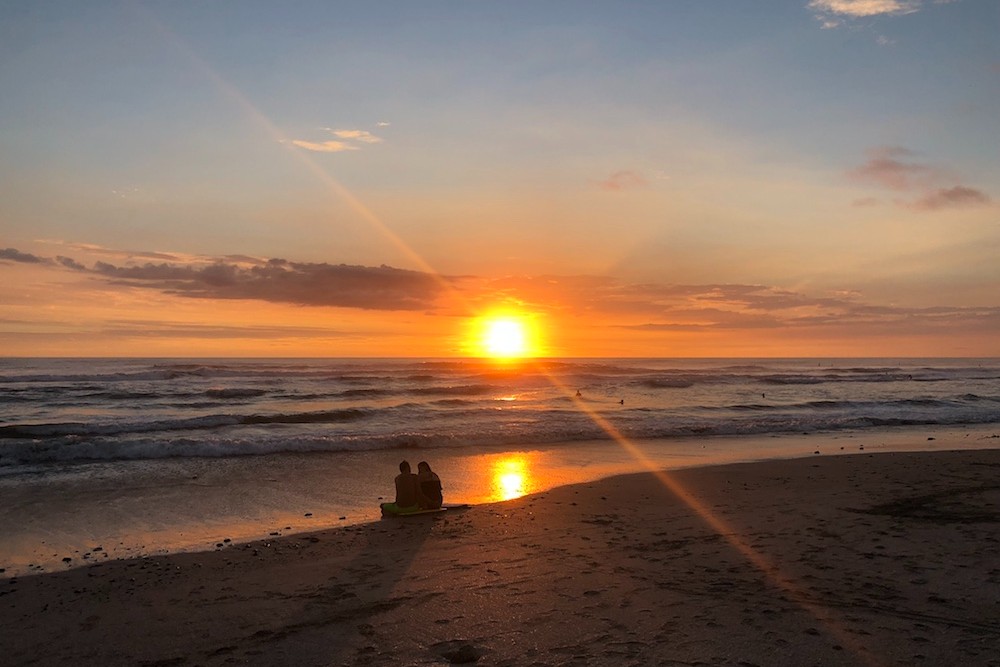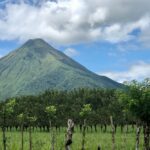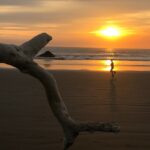A native Costa Rican, Irene Edwards has a local’s-eye view on how the country has been faring during the pandemic. What’s more, as one of Wendy’s recommended trip designers for Costa Rica (she’s been on The WOW List since 2014), she also has a traveler’s perspective on what it’s like to experience the country’s jungles, beaches, volcanoes, and hot springs right now.
Irene and her husband, Richard, who together co-founded Greenspot, have been living and working in-country throughout the pandemic. Travelers were allowed to return starting TK, with the completion of a health pass and proof of medical insurance that covers Covid-related bills (for more information on this, see “The Countries That Are Open to U.S. Travelers and What You’ll Find There.”)
Since then, Irene and Richard have been keeping close tabs on how the local tourism landscape is adapting—and also dreaming up new ways for visitors to connect with the culture. We called them at home in La Fortuna to find out more.
*This article is part of a series in which we are following the pioneers on Wendy’s WOW List of Trusted Travel Experts as they road-test their reopened destinations anew. Remember, these are the trip planners with the highest standards in the world—they’ve earned these stellar reviews—so we’ll ask them how local safety protocols measure up; the savviest ways to sightsee and explore; and the safest places to stay, eat, and get health care if necessary. In other words, we’ll follow them as they do all the in-country legwork so that you don’t have to.
You live in Costa Rica, so you have first-hand knowledge of what it’s been like this past year. Where have you traveled in the country during the pandemic?
Richard: Nearly everywhere. We’ve been out to the Pacific coast several times, where a big chunk of our travelers go for the beach: the Nosara area in the north and Corcovado National Park area on the southern coast. Irene just got back from Manuel Antonio. We have a condo near San Jose, but also spend time near Irene’s mom’s farm near Arenal in La Fortuna. So we’ve got a really good handle on the hot spots.
What activities were most popular pre-Covid, and are they still possible now?
Irene: Hanging bridges, canopy tours, rafting, hiking, exploring national parks (which are now open to the public), wildlife refuges, and cultural activities such as cooking classes—including making tortillas with my mom in her house—and school visits. Because the pandemic has closed schools, school visits aren’t happening right now, but most of the tours in the country are operating. Local tour providers now have smaller groups. Before, they could handle up to about 15 people; now it’s perhaps eight. We actually book these experiences to be private (instead of a group). The only activity that we are a little hesitant on our part to recommend is the canopy tours because they need maintenance and some companies aren’t doing that. But most of the tours are open and running.
Richard: Costa Rica is intact. What you come here to do—the beach, the jungle, and all these outdoor activities—you can still do them. That’s the good news for everybody.
What about cultural and indoor experiences? How are those different?
Irene: Because of the pandemic, a lot of people have been forced to be creative and develop new travel experiences. For example, we met with a local señor here who needed an income; he wasn’t in tourism at all before, but now he is willing to show people, even locals, how he processes cinnamon; it’s outdoors, and you go with him to the trees and see how he harvests it. We have another guy who makes cheese; he’s who we get our own cheese from, so I asked him about his farm, and we’re thinking about making that an excursion for travelers. Things like that are possible, and we are trying to find more local people who are developing such experiences. My mom, too, has been making her own spices— mixing orange peels with herbs, for example. It’s happening more and more, all around the country.
Richard: In the end, it will be a win for travelers: They will have new and more authentic things to do. We needed a recalibration anyway, because Costa Rica was getting commercial. But we, and the people around us in the eco-travel sector, are realizing this is an opportunity to go back to basics and back to your origins.
That sounds great. But for now, what are you finding that travelers want to do when they visit? Are they ready for those interpersonal experiences?
Richard: Travelers are less inclined to do those activities right now. They’re more vegging out. They are trying to limit their exposure—so they’re eating in their hotels, for example— and they are doing fewer activities than before.
Irene: In the past, people wanted to come for a week and explore as many destinations as possible. Now, they are limiting themselves to the beach or two places max and just enjoying themselves. They are also waiting until they’re in Costa Rica to book activities, rather than booking them in advance. I think it’s related to them getting a sense of how things are when they arrive, and then feeling more secure. The activities they choose are focused on nature and being outdoors.
How are the hotels that you’re visiting?
Irene: We are re-inspecting the hotels we recommend, to make sure that the services and maintenance are still there. It’s been interesting to go back and re-evaluate their environment and ambience. We’ve all been having a break. Most of the hotels are not operating 100% and they don’t have a full staff. Arenas Del Mar is one of our preferred lodges, but the ambience is very different right now; they’re slowly getting back to what they are used to. It’s going to take time to really be normal. When I went to Manuel Antonio, it’s like they are in sort of a trance. That was my comment to the lodge managers: we can’t lose that chispa, that spark! We have to get it going again, because that’s what is attractive to the visitors who come to Costa Rica.
Also, we have seen a great interest in rental homes and villas. Right now, we are trying to be a villa specialist and building a database of very select rental homes. That has been my homework: finding unique rental homes, especially on the beach.
What protocols are hotels putting in place?
Irene: They are cleaning the rooms very well, disinfecting luggage, not allowing anyone into the room after check-in (except for the guest). The in-room snacks are touchless—they have created electronic menus, and you can scan the menu with your phone and order from your phone. Check-in is handled electronically. Some of the more remote hotels have limited internet access, so we do check-in for travelers before they get there; the only thing they have to do at the hotel is give their credit card.
What is it like to dine in a restaurant?
Irene: At hotel restaurants, the only thing on the table is the hand sanitizer. They bring plates and silverware afterward. The servers wear masks, but you can take yours off once you start eating. The tables are spaced 1.8 meters apart, because that’s six feet. Reservations must be made beforehand. They are also offering the option of having your meal outdoors..
Richard: They used to charge to set up tables on the beach and outside, but now that’s something you can just ask for.
What about non-hotel restaurants?
Irene: Local restaurants have certain protocols but, in general, they are not as elaborate as the ones that the hotels use. We are not going to say don’t eat at the local restaurants, because that is part of the whole experience of Costa Rica, but we have eaten at some of them, and our advice is to always wear your mask and wash your hands and keep your gel handy. Our customers always ask for restaurants, and we have a list of the best. Plus, when our travelers have a private guide, that’s very helpful because the guides know which places are safest.
What Covid protocols have you put in place yourself with your own staff and expert guides?
Irene: All of our drivers and guides are required to wear masks, which we provide, at all times. Even if the traveler doesn’t, our guides and drivers must. We keep hand sanitizer in the car. We provide refillable water bottles that are different colors, so everyone knows which is theirs. We offer Covid tests for staff upon client request.
Who is traveling to Costa Rica now, and where are they going?
Irene: We are seeing a lot of families with young kids traveling right now. They are sticking to the more usual routes, like Manuel Antonio, Arenal, and Monteverde, but mostly beach. Before the pandemic, we were seeing a lot of families with grandparents, but not now.
Richard: They’re not heading off the beaten path, and we’re not encouraging that anyway, because the beaten path is doing the best job of sticking to the protocols.
If it’s the beaten path, how do you make that special?
Richard: It is special! Before the pandemic, you had to work hard to make it special because there were too many people. So we spent all our time curating an uncrowded, relaxing experience. Now, though, that’s a given! [Laughs.] We can focus on the details even more than before—all the little things that would be special to individual members of the family. It’s not anything Irene wasn’t doing before, but we have the ability to spend more time on that now.
The one and only reason you come to Costa Rica is to be outdoors, so you’re here in the jungle or on the beach, and now you’ve got exponentially less people to share all that with. Last night, I was watching the local news, and a local guy was sitting in front of a family of four tapirs! I’ve seen maybe three tapirs in the 35 years I’ve been here, but he was just sitting in the stream, and the tapirs were just totally relaxed, plodding around behind him. Even on our farm, we are seeing great green macaws, which are endangered, flying all over. It’s like paradise.
We’re Here to Help
Right now is a remarkable opportunity for global travelers who are vaccinated. When your friends say that travel is problematic as a result of the pandemic—rental cars aren’t available, service even at 5-star hotels is shoddy—the problem is they’re not planning their trips right! Travel can be spectacular now if you choose the right destination, know the savviest local fixers, and approach them the optimal way. Check out these recent trip reviews to see the difference that Wendy’s WOW approach to trip planning makes. And if you’re looking for a similarly carefree travel experience, contact us at Ask Wendy.

